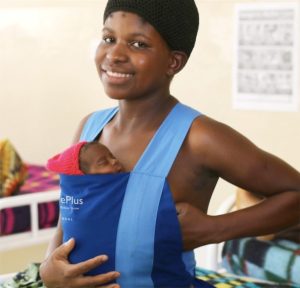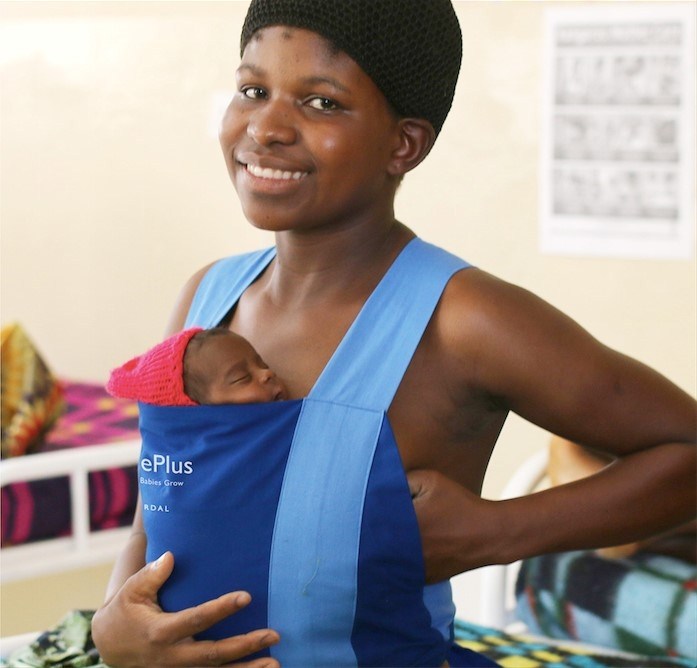‘Kangaroo Mother Care’ May Improve Preemies’ Lives Into Adulthood
Skin-to-skin nurturing linked to increased survival, better social and behavioral outcomes, study finds

‘Kangaroo Mother Care’ May Improve Preemies’ Lives Into Adulthood
By Karen Pallarito
HealthDay Reporter
When Einat Zemach’s son was born early at 32 weeks’ gestation, she and her husband would snuggle him skin-to-skin upon their chests for two or three hours at a time. They did the same for their second born, a daughter delivered at 34 weeks’ gestation. The Melbourne, Australia, stay-at-home mom was told “kangaroo care” would keep her premature babies warm, help them breathe better and promote bonding with mom and dad.
“I could sit like that with them for hours,” said the 37-year-old.
Now, a new study suggests “kangaroo mother care” — a more intense version involving nearly round-the-clock skin-to-skin contact and exclusive or near-exclusive breast-feeding — may extend and enhance the lives of these vulnerable infants well into adulthood.
Premature and low birth weight babies nursed and nestled on their mothers’ bosoms were much more likely to live into their 20s than those in a control group who received incubator care, the study found. In addition, the skin-to-skin care babies did better on measures of social and behavioral health, the findings suggested. They were less aggressive, impulsive and hyperactive, for example. And they have significantly larger brains, particularly the part of the brain responsible for learning, the researchers reported.
The March of Dimes defines a full-term pregnancy as one that lasts 39 to 41 weeks. Although the study found a link between the skin-to-skin care and better outcomes in the infants, the study cannot prove a direct cause-and-effect relationship between these factors.
The study was published online Dec. 12 in the journal Pediatrics. Premature babies can be prone to more health problems — even long-term ones that can affect their whole lives. About one in 10 babies is born prematurely each year in the United States, according to the March of Dimes.
Kangaroo mother care was pioneered decades ago in Bogota, Colombia, where a scarcity of incubators gave rise to a different way of caring for vulnerable infants. Newborns weighing less than a small sack of sugar would be strapped upright to mom’s chest, much like a joey (a kangaroo’s baby) in its kangaroo mother’s pouch, for at least 20 hours a day. Variations of this method involving briefer periods of skin-to-skin care and allowing dads to be kangaroo caregivers, too, are now part of mainstream newborn care, Dr. Lydia Furman explained in a journal editorial that accompanied the study. “What began as a bold innovation is now a widely practiced, wonderful method of promoting bonding and breast-feeding,” said Furman, a pediatrician at University Hospitals Rainbow Babies and Children’s Hospital in Cleveland.
Hospitals need training, though, “so that no one falls asleep with an infant on their chest,” she cautioned. Dr. Marielle Nguyen said it also humanizes the neonatal intensive-care unit experience. She’s a neonatologist with Kaiser Permanente in Southern California. It gives moms and dads the sense that “they are part of their babies’ care,” Nguyen said. It’s been 20 years since Colombia pediatrician Dr. Nathalie Charpak and her colleagues conducted the first randomized controlled trial showing that kangaroo mother care is as safe as incubator care. For the new study, Charpak and her team followed children from the earlier trial to see how they were faring. A social worker contacted the now-young adults from 2013 to 2014.
Of the 716 original study participants, 264 young people, who weighed about 4 pounds or less at birth, were re-enrolled. Researchers compared their results with a control group of similar-weight preemies who received incubator care. Impressively, those who received kangaroo mother care had a death rate less than half of those in the control group. They also had fewer school absences, a small but significant difference in intelligence and higher hourly wages, the investigators found. And they grew up in families that were more cohesive, the study authors added. However, they had lower math and language scores than the incubator kids — a finding Charpak’s team had difficulty explaining.
Furman said that teasing out the long-term effects of care delivered 20 years earlier is challenging but doesn’t diminish the importance of the kangaroo strategy. Dominique McMahon is program officer of Grand Challenges Canada’s Saving Brains program, one of the study’s funders. She sees potential to expand the technique, especially in resource-poor areas. “It is something that developing countries can take on where incubators are very expensive, poorly maintained and have interrupted energy sources,” she said.
More information
Visit the World Health Organization for more on caring for preterm and low birth weight babies.
SOURCES: Einat Zemach, parent, Melbourne, Australia; Lydia Furman, M.D., professor of pediatrics at Case Western Reserve University School of Medicine and pediatrician at University Hospitals Rainbow Babies and Children’s Hospital, Cleveland; Marielle Nguyen, M.D., neonatologist, Southern California Permanente Medical Group, Anaheim and Irvine, Calif.; Dominique McMahon, Ph.D., program officer, Saving Brains, Grand Challenges Canada, Toronto

 December 13, 2016
December 13, 2016




 May 19, 2018
May 19, 2018 



